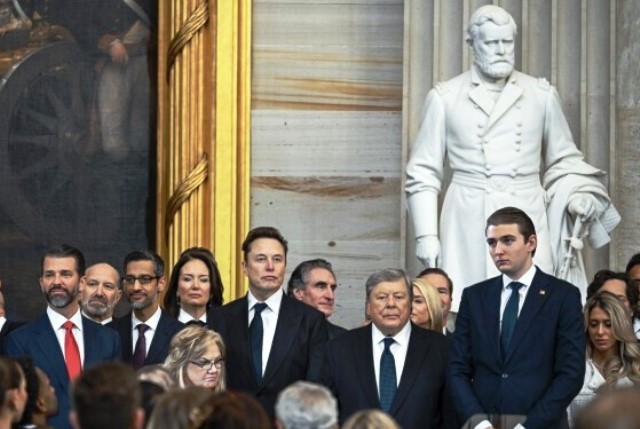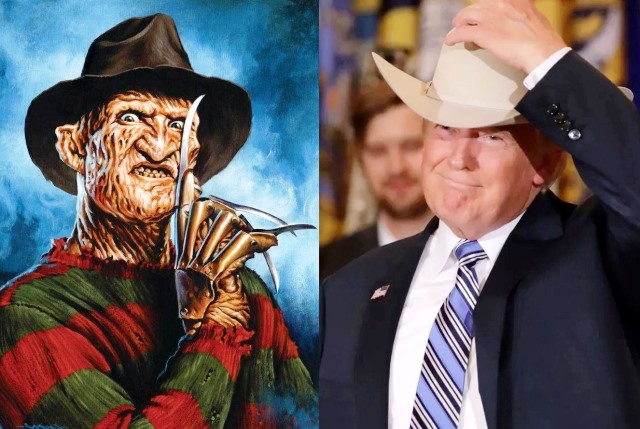Newspaper interview pieces are generally on predictable lines and very little of substance generally emerges from the discourse. This is specially the case when the interviewees hold sensitive offices in business and finance. They are not expected to say things that will offend the powers that be. Some will, however, dare cross the ‘Lakshman rekha’ when their business or wealth faces a threat from government policy changes.
For example, as the world has recently seen France’s richest man and the owner of luxury goods group LVMH (Louis Vuitton Moet Hennessy) Bernard Arnault coming down hard on the proposed 2 per cent tax on billionaires as an assault on France’s economy.
Arnault fired salvos at the new tax plan’s architect economist Gabriel Zucman as being “first and foremost a far-left activist out to pull down the liberal economic system.” Earlier, wealthy individuals in the UK were so frustrated with the abolition of non-domicile (non-dom) status that it triggered wealth leaving the country. India born steel magnate Lakshmi Mittal who made London home for nearly 30 years is reportedly considering the option to find a new abode – it could be Dubai where he is already an investor in real estate or Switzerland where he owns a chalet or somewhere else – following the change in tax rules.
Except when their income faces the prospect of being nixed by tax targeted at the rich, business leaders as a regulation will be discreet to a fault in their reaction to government policies not to their liking.
If that individual happens to be Jamie Dimon, chairman and CEO of JP Morgan Chase then his interviews will be unfailingly pieces of art in choosing words and framing sentences that will leave the readers with the challenge to figure out what exactly is his stand on controversial subjects beyond hedging of words.
Thanks to Mayur Shetty of Times of India who recently spoke at length with Dimon who is managing affairs at the world’s largest bank that has among its clients many leading corporates and governments from around the world, we have the taste of a fine interview covering some highly contemporary but sensitive subjects. A battle of wits between the interviewee and the interviewer all through the conversation where the former will skilfully avoid any direct criticism of President Trump even while making his stand clear on controversial subjects.
Remember Dimon, a Harvard Business School MBA and a Baker scholar, runs an enormously large bank and financial services company based out of the US and, therefore, he can ill afford to be on the wrong side of President Trump. At the same time Dimon has a mind of his own and he knew before he sat down for the TOI interview that he would be required to discuss issues on tariffs, H-1B visas, immigration and Fed autonomy, etc.
ALSO READ: Trum And The Nightmare On Film Street
As the scene is unfolding, President Trump in his cherished mission to make America great again (MAGA), whatever that is, goes on making a series of announcements with implications for the rest of the world. These are causing worldwide dismay since they are found to be at odds with what America has always stood for.
The US President’s office wields enormous power. Even then, Trump is running roughshod over the Congress, judiciary and offices supposed to enjoy autonomy. He remains on this mission even while he is aware that he is having adversarial relationship with growing numbers of Americans. If anything, dislike for him is more intense abroad. In this growing gloominess, Trump thought it would help him to have the US tech Moguls over to dinner and make them after a hearty meal sing the praises of the President and his work. The proceedings were video recorded and were widely broadcast.
That meeting was attended by the likes of Bill Gates, Mark Zuckerberg, Satya Nadella, Jeff Bezos and Sundar Pichai. One without exception expressed happiness with the way Trump was running the country. Asked by the President, each pledged big investment in the US in the coming days, But Elon Musk of Tesla, who spent an enormous $277 million to help Trump and some of his men win the elections was missing at the reception. This was because of his fallout with Trump after being engaged for a tempestuous 129 days in cutting Administration expenditure and government efficiency.
All the dinner attendees except for Gates whose foundation is engaged in spending billions of dollars for improvement of health of the poor across the continents and elimination of diseases, including HIV are using the services of technical hands of foreign origin – incidentally, the majority of them are Indians – who need H1-B visas to work out of the US. The world has been thrown into a conundrum over the new requirement of a hefty fee of $100,000 for every new H1-B visa application.
When Shetty wanted to know the likely impact of changes in visa rules and HIRE (Halting International Relocation of Employment) Act, which is still at the Bill stage, the JP Morgan chairman said: “For us, visas matter because we move people around globally – experts who get promoted to new jobs in different markets.” Expectedly, Dimon will not allow himself to be pinned down to saying anything critical about the US Administration’s moves on restricting entry of foreign nationals. The most he will concede is that he will be engaging with stakeholders and policymakers on the subject.
From the interview, one can figure out where his sympathies lie on talents be it relating to technology, business and education continuing to move into America. Informing Shetty that his grandparents were Greek immigrants, Dimone says: “The US still needs to remain an attractive destination… We should remain a very welcoming country.” His travel around the world has made him experience “a strong tech diaspora.” The world outside of America, according to Dimone, is gaining in competitiveness “in technology, innovation and growth… more competition with America benefits everyone.”
Dimon has said very little on the President’s tariff moves except for saying tariffs are modestly inflationary and a little recessionary. Much will, however, be read in his saying: “I’m in the free-trade camp other than with regards to national security.” To this correspondent the piece de resistance of the interview is when Dimone dilates on globalisation, which he doesn’t see ending even while it “dipped a little a couple of years ago. Globalisation “slows down occasionally and sometimes even reverses along certain trade routes. But I don’t believe globalisation is going away. If you look at the trade numbers, they haven’t really declined.”
What readers have missed in the interview is Shetty not asking Dimone about development of clean energy such as solar and wind power and bio fuels as the US President remains decidedly against growth of renewable energy. In fact, he will never miss an occasion to mock at nations engaged in developing alternatives to fossil fuel based energy.


